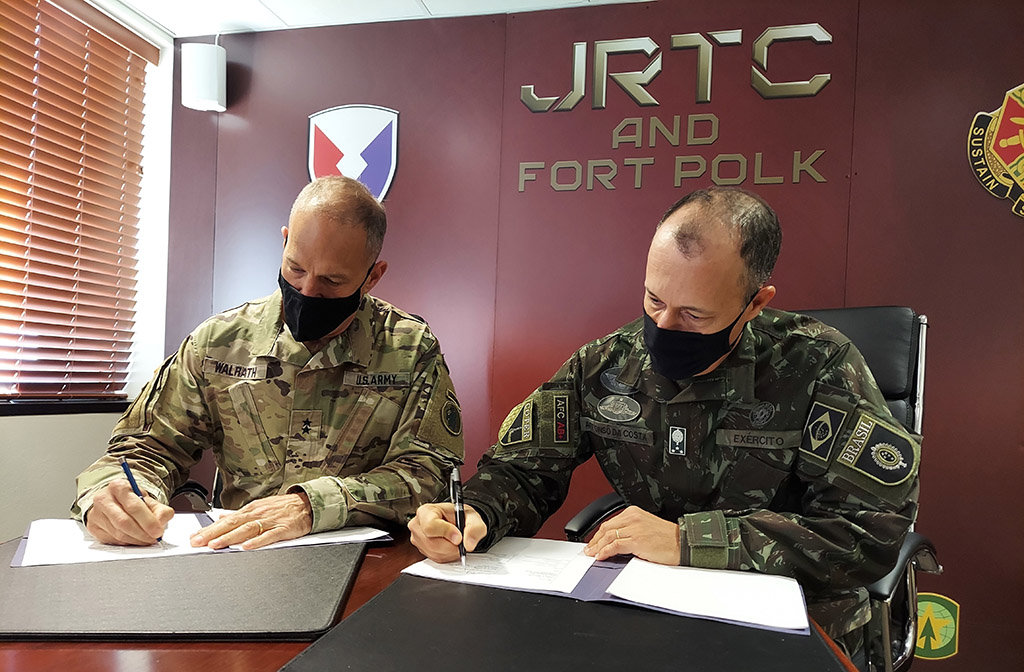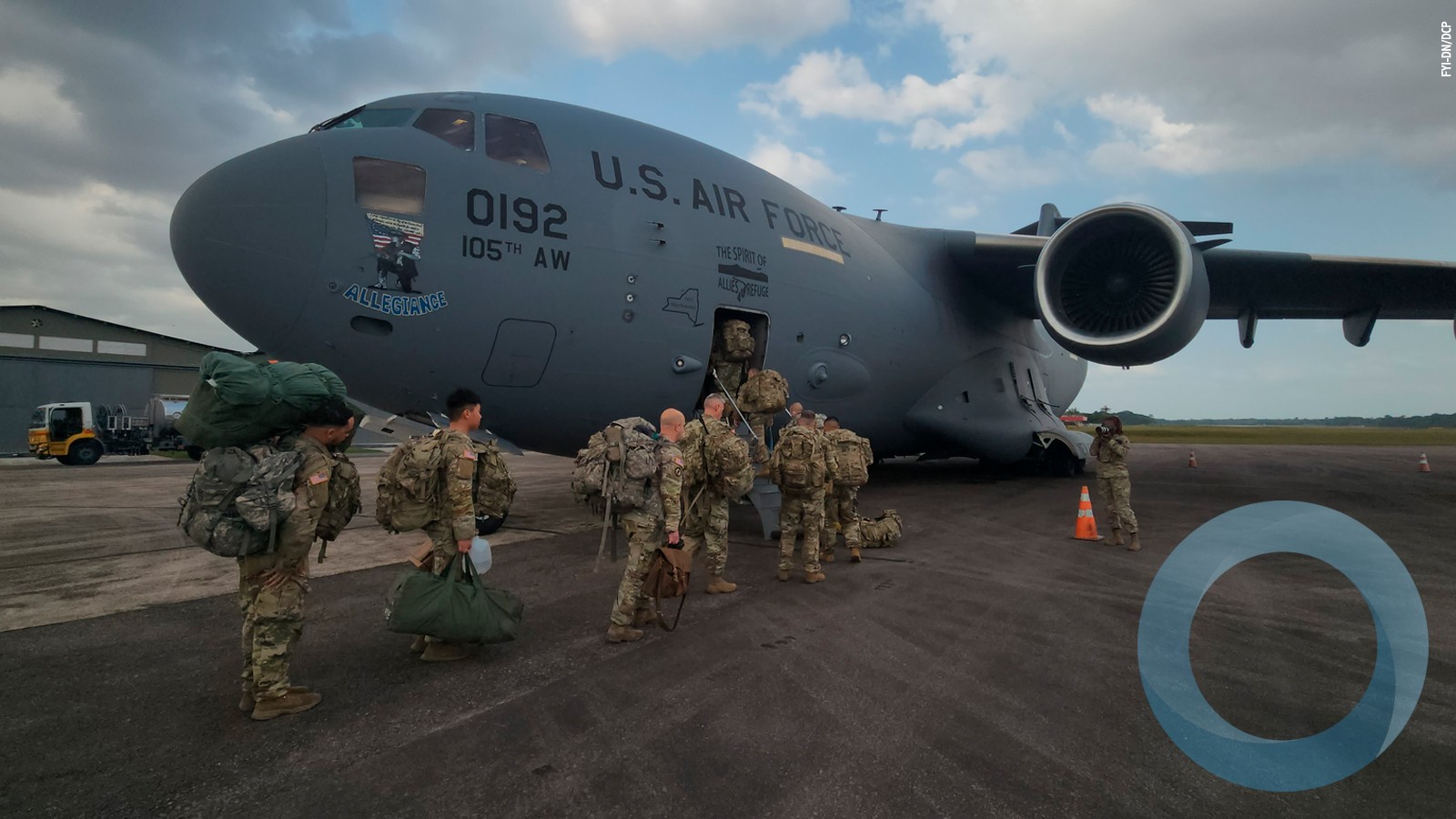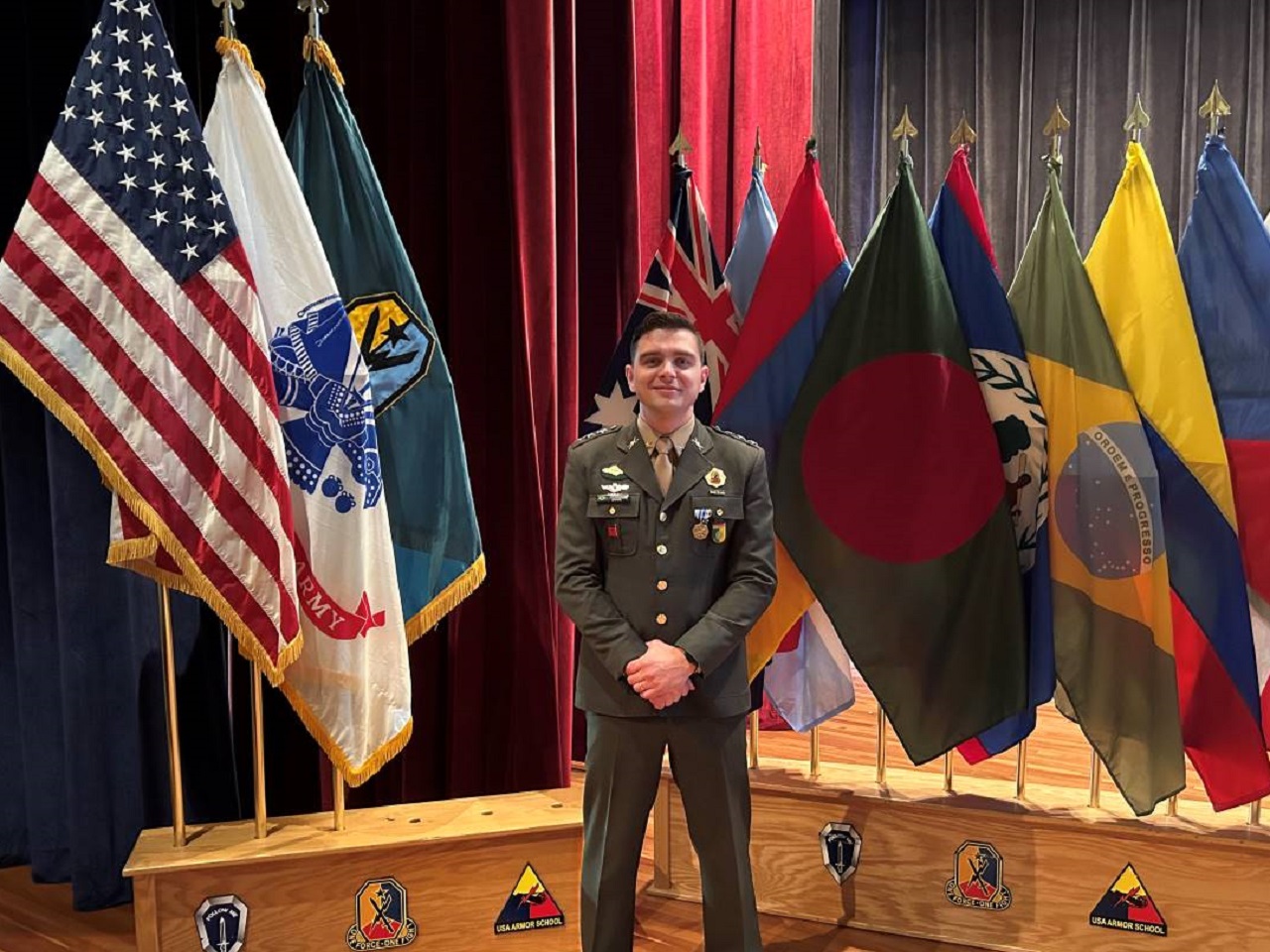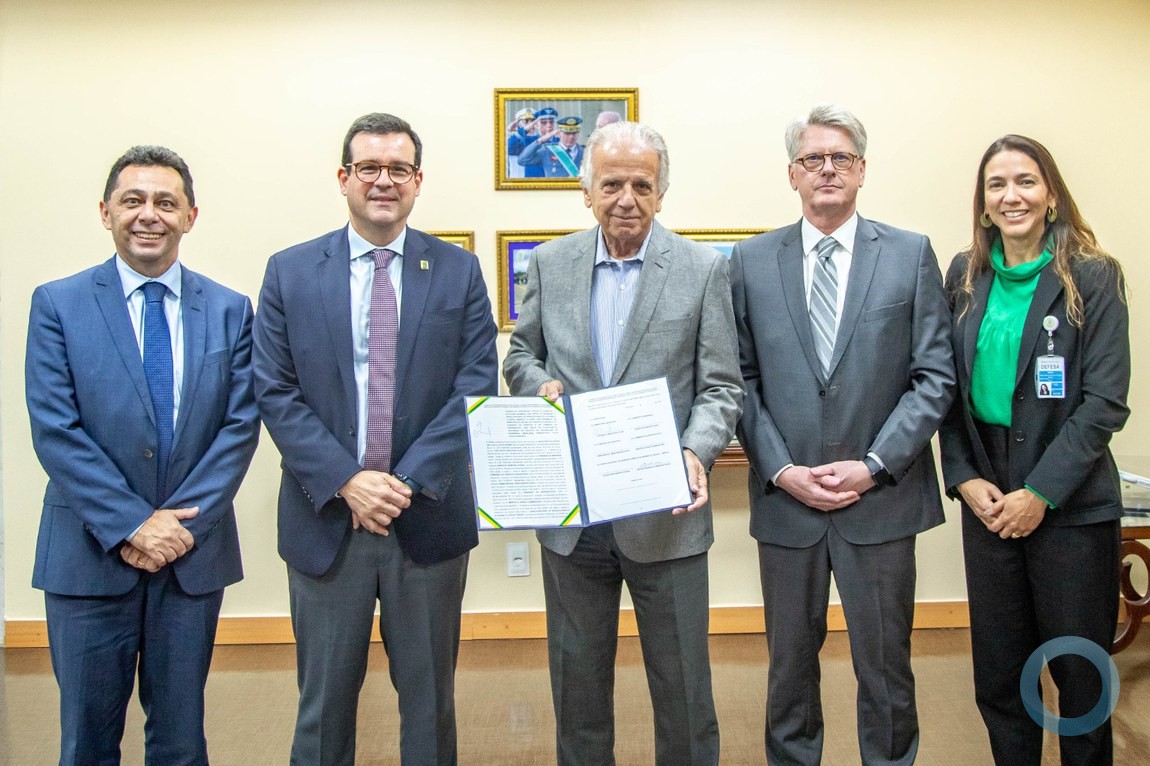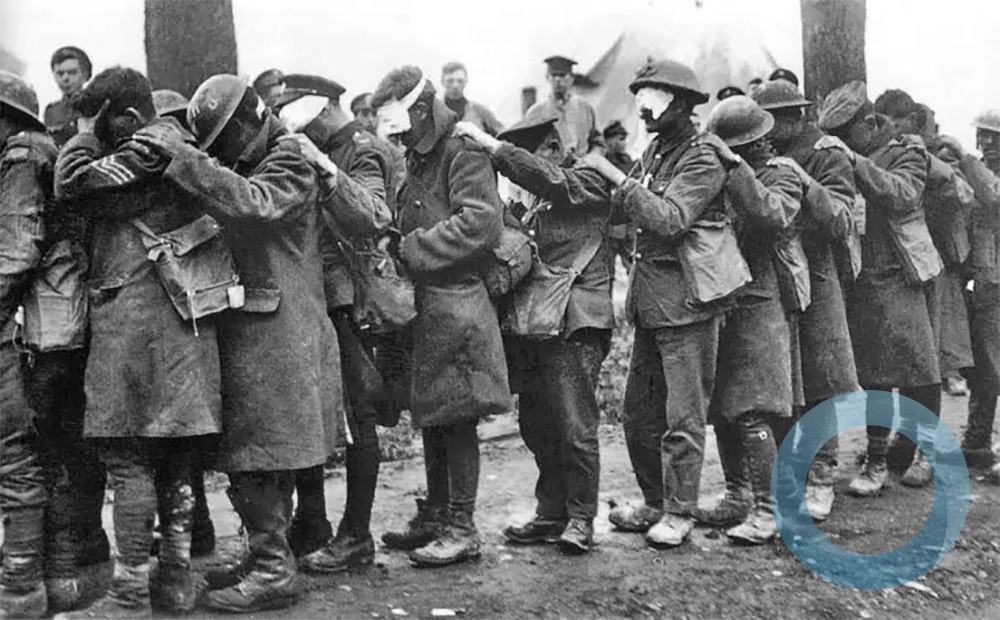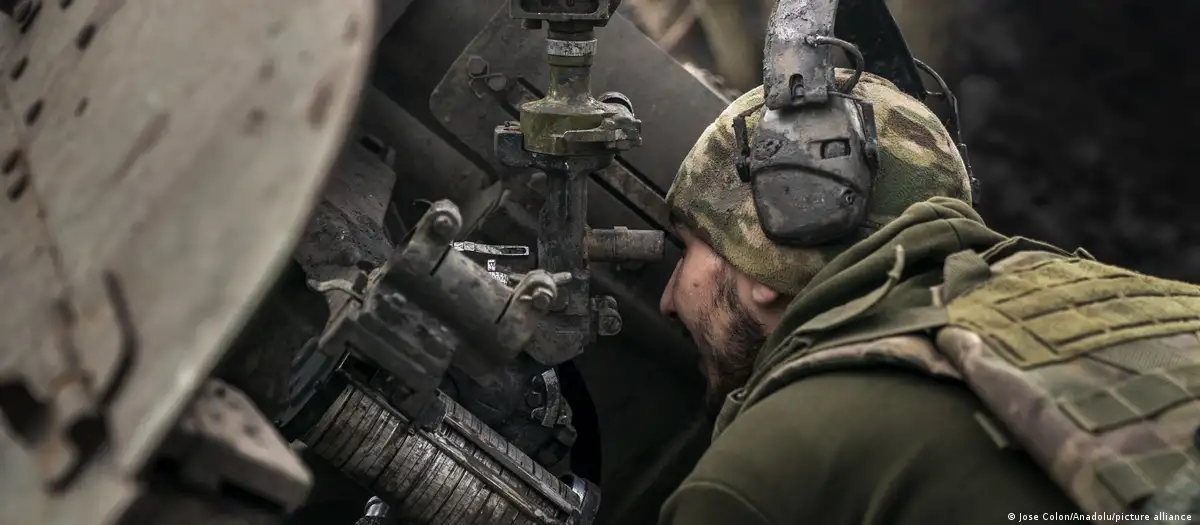Note DefesaNet
Text in Portuguese
Culminating – Líderes militares brasileiros e americanos enfatizam parcerias na JRTC Link
The Editor
Donald Sparks
US Army
February 9, 2021
During World War II, Brazil was the only South American country to contribute troops to the allied cause, and 75 years later, the Brazilian Army made its mark again with U.S. forces as the first South American company-sized element to train at the Joint Readiness Training Center (JRTC).
Senior U.S. military leaders including Adm. Craig S. Faller, U.S. Southern Command commander, Gen. Michael X. Garrett, U.S. Army Forces Command commander, Maj. Gen. Daniel R. Walrath, U.S. Army South commander and Maj. Gen. Christopher Donahue, 82nd Airborne Division commander, met senior Brazilian military leaders Feb. 1-2 at JRTC and conducted key leader engagements marking the significance of the bilateral training exercise.
“This Brazilian airborne company presence and participation in one of the Army’s combat training centers represents the first time we’ve had a partner army from South America participate in one of these rotations,” Walrath said. “This is a continuation of 75 years of history together already, certainly a historic milestone, we see as just a continuation of our ever-increasing partnership.”
O Gen Brig Daniel R. Walrath, comandante geral do Exército Sul, esquerda, e o General-de-Brigada Marcos de Sá Affonso da Costa, chefe de treinamento do Comando de Treinamento das Forças Terrestres do Exército Brasileiro, firmam acordo técnico entre o Exército Brasileiro e o Exército dos EUA representado pelo Exército do Sul (US Army South), com relação à participação brasileira em exercícios de treinamento combinado em conjunto com o Joint Readiness Training Center Rotation 21-04, em Fort Polk, Louisiana, 1º de fevereiro.
The Brazilian Army, or Exército Brasileiro (EB), participation in JRTC is the culminating event of a five-year plan developed between the EB and U.S. Army South during the Army-to-Army Staff Talks. The Staff Talks Program promotes bilateral efforts in order to develop professional partnerships and increase interaction between partner nation armies.
“I am proud of Army South’s and the Brazilian Army’s long term commitment to coordinating and preparing for this exercise over the last four years,” Walrath said. “I am also proud to see our Brazilian Army partners achieve the first-time participation by a South American army at a U.S. combat training center.”
Brazilian military leaders received a JRTC mission and capabilities briefing, an aerial tour of the training area known as “the box,” where Soldiers are exposed to conditions and situations to fight an opposing force, and they observed a nighttime static-line airborne operation by the 82nd Airborne Division into the training area.
“The training environment at the JRTC is unmatched by any other country’s training center – the only thing more difficult is actual combat,” Walrath said. “Partnership with the U.S. Army provides the best opportunities to increase readiness and interoperability to address shared security challenges.”
In solidifying the partnership between Army South and the Brazilian Army, Walrath and Lt. Gen. Marcos de Sá Affonso da Costa, chief of training, Land Forces Training Command, Exército Brasileiro, signed a technical agreement (a non-binding arrangement) that outlines duties and responsibilities of participating units throughout the duration of the JRTC rotation.
Troops US Army 82nd Airborne Division and Brazilian Army Company Photo US Army
““First, our participation rescues the history and traditions of parachutists in Brazil, as it was here (United States) that our pioneers came in the 1940s during World War II to learn about airborne techniques and introduce airborne activity in Brazil,” da Costa said. “The return of the parachutists to the United States, here at JRTC, is undoubtedly a milestone for the Brazilian Army.”
Da Costa mentioned it is worth noting that Brazil is a major non-NATO ally, and its participation in intense multinational combined exercises that simulate combat is very important to his nation’s Army.
“The exchange with the U.S. Army provides us a great opportunity to learn lessons useful for doctrine evolution, and an opportunity to evaluate the degree of operational preparation of our troops – their discipline and motivation, in addition to the capabilities of our staffs and the leadership of our commanders,” da Costa said. “It is also a time for us to evaluate the military material we use in operations.”
Over the past five years, Army South executed a series of subject matter expert exchanges and planning meetings to help prepare the EB for the rotation during U.S. and Brazil army-to-army staff talks.
“Although the rotation is the culmination of the five-year plan, it is not the culmination of our cooperation with them,” said Sam Prugh, Army South, Security Cooperation Division deputy. “This rotation represents the first in a series of bi-annual combat training center rotations that the EB is planning, with the next one scheduled for 2022 with the 101st Airborne Division and the EB 12th Infantry Brigade (AASLT).”
Brazilian soldiers look US armaments Photo US Army
Prugh mentioned the rotation represents the first exchange of units with the U.S. Army preparing to send a company from the 101st Airborne Division to train in November 2021 as part of Southern Vanguard – an exercise to produce readiness and security cooperation within the Western Hemisphere.
“Our goal would be regular or routine training exchanges; that in each time we come together and train, whether in the United States or Brazil; that we continue to elevate the complexity and challenges of the training events,” Walrath said. “Each time the training becomes more difficult and more challenging, but each time it’s strengthening our relationship after each event. The goal is interoperability.”
“We look forward to making training exchanges with the Brazilian Army – both at U.S. training centers and in Brazil – occur on a routine basis.”
As the training opportunities between the U.S. and Brazil expand in the future, da Costa is optimistic the bilateral events will forge the friendship between the two armies.
“We expect to continue seeing Brazilian and American soldiers together in high-intensity exercises, facing on equal terms the most rigorous simulated combat conditions, both in the U.S. and in Brazil, as scheduled for the year 2021 and beyond,” da Costa said. “I am sure that this exchange will visibly enhance quality in the preparation of Brazilian Army troops. We firmly believe in the benefits of this increase in troop training exchanges, and know that our partners in the U.S. Armed Forces, through the Southern Command and, in particular, Army South, have the same opinion.”
Maj. Gen. Daniel R. Walrath, right, U.S. Army South commanding general, greets a Brazilian Army soldier taking part in the bilateral training exercise at the Joint Readiness Training Center at Fort Polk, Louisiana, Feb. 2, as Lt. Gen. Marcos de Sá Affonso da Costa, chief of training, Land Forces Training Command, Exército Brasileiro, looks on. Photo US Army






